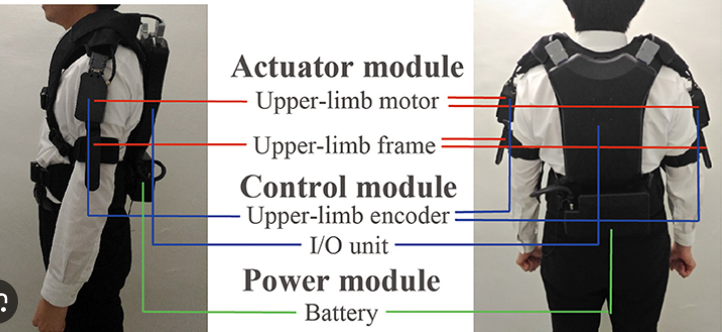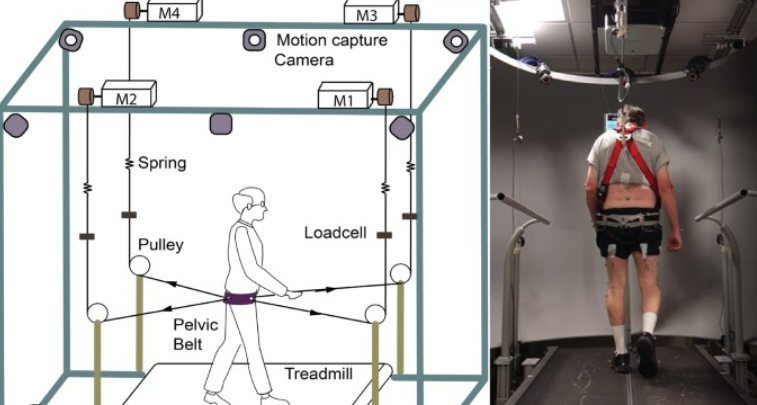Parkinson’s disease sufferers frequently experience “freezing,” a crippling symptom in which they find themselves abruptly unable to move their feet forward.
Parkinson’s disease patients may discover new hope from a novel, more sci-fi perspective, according to experts, despite the fact that medications, surgery, and behavioral therapy have all been shown to be rather ineffective against freezing.
By gently pushing on the hips while the patient’s leg swings, a soft robotic exoskeleton seems to be able to assist Parkinson’s patients in overcoming a possible frozen episode. A 73-year-old Parkinson’s patient who had previously received medication and surgery but still experienced debilitating frozen episodes was used as a test subject for the exoskeleton.
Also read-Mask Use Is Increasing In Hospitals Due To An Increase In COVID-19 And Flu Cases

Parkinson’s Disease
Researchers note that the patient was able to walk with the exoskeleton without any extra training, experiencing only sporadic instances of freezing indoors. Along with being able to walk and converse without freezing—something he frequently couldn’t do without the exoskeleton—the patient was also able to walk farther and quicker than he could have done without the technology.

Parkinson’s Disease
During the study, the patient said to the researchers, “The suit helps me take longer steps and when it is not active, I notice I drag my feet much more.” It’s definitely helped me, and I think it’s a step in the right direction. It might enable me to continue walking and live a high-quality life. Parkinson’s sufferers experience freezing episodes where they abruptly lose the ability to move their feet, frequently in mid-stride, researchers said.

Parkinson’s Disease
Until the patient stops completely, their feet move in a succession of staccato stutter steps that are progressively shorter and shorter. Patients with Parkinson’s disease should be cautious during freezing episodes because they are a major cause of falls. Thus, in order to encourage walking without freezing, researchers at Harvard University and Boston University decided to develop a soft, wearable robot exoskeleton.

Parkinson’s Disease
Professor of engineering and applied sciences at the Harvard John A. Paulson School of Engineering and Applied Sciences, Conor Walsh, led the research team that discovered that “just a small amount of mechanical assistance from our soft robotic apparel delivered instantaneous effects and consistently improved walking across a range of conditions for the individual in our study,” according to a Harvard news release. Such a gadget might be used to enhance hip mobility and help swing the leg forward, thereby lowering the amount of energy required for walking, according to earlier research conducted by Walsh and his colleagues.

Parkinson’s Disease
The gadget is supposed to bring researchers fresh perspectives on the reasons behind Parkinson’s patients’ paralysis. “We don’t really know why this approach works so well because we don’t really understand freezing,” said Terry Ellis, a researcher and the head of Boston University’s Center for Neurorehabilitation. However, Ellis went on, “This work suggests the potential benefits of a ‘bottom-up’ rather than a ‘top-down’ solution to treat gait freezing.” It is evident that the restoration of almost normal biomechanics modifies the peripheral gait dynamics and could have an impact on the central processing of gait control.

Frequently asked questions
What is freezing?
Freezing of gait is the temporary, involuntary inability to move.
- During a freezing episode, a person with PD may feel like their feet are stuck in place or glued to the ground.
- Freezing may also affect other parts of the body, such as speech.
- Some people are more likely to have freezing episodes than others.
- Freezing may occur when the person with PD is due for the next dose of dopaminergic medications. This is called “off” freezing; usually, freezing episodes lessen after taking the medicine.
- The exact cause of freezing is unknown.
Also read-Hold On: The U.S. Is Strengthened By The New COVID-19 Variant JN.1
images source: Google
Disclaimer: The opinions and suggestions expressed in this article are solely those of the individual analysts. These are not the opinions of HNN. For more, please consult with your doctor




































